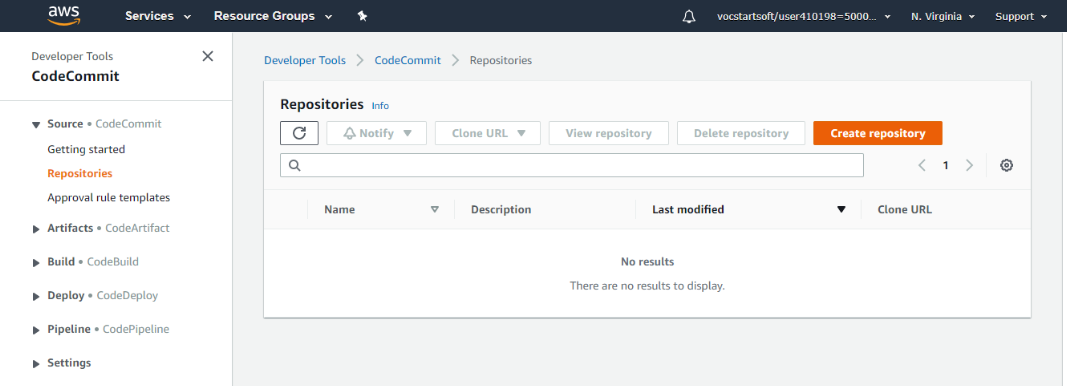AWS CodeCommit is a source control service that is provided by Amazon Web Service which is fully managed. It is a version code service. It helps to manage and store assets such as codes or documents or any other type of file such as binary file etc. It allows the team to work collaboratively in a secure and highly scalable environment. It eliminates the need for third-party version control and also eliminates the need for your own source control system. You can work easily with your existing git tools by using the CodeCommit service. You can store your source code and other files within a few clicks and can also perform pushing, pulling, or commit of data with ease. It allows you to cross-link the two AWS accounts easily to share repositories in a secure environment but need to remember a few things that do not share SSH key or Aws credential.
Git Vs AWS CodeCommit
Differences:
- AWS
CodeCommit is more secure than the git as AWS uses IAM roles for securing
techniques which allows users to share their repositories to the limited
person and in highly secure environment.
- Git
interface comes out to be more interactive than the AWS CodeCommit .
- Git
is basically connected to the github whereas AWS CodeCommit is managed and
hosted by the AWS which is more reliable platform.
Similarities:
- Both
can integrate with AWS cloudbuild that can import your
github and other Google cloud storage to your specifications and produce
containers.
- Both
uses git repositories.
- Both
supports code review.
Benefits of using AWS CodeCommit
- Highly
Scalable: It scales up or scales down according to your data and can
handle large repositories and the number of branches with ease.
- Fully
Manageable: As a developer you need to focus more on the development
rather than the management or maintaining the hardware or the software.
This service provide you to focus more on production and it manages all
the underlying needs and make it highly available and durable.
- Work
collaboratively: It allows multiple users to work upon the single
source code at different section at a same time with ease.The changes and
the updates are later merged and pushed in the repository.
- Security: It
provides a secure environment to store your source code, documents, binary
files and many more. It uses the encryption technique to secure your
stored data.AWS uses IAM roles to secure your data which allows you to
share your data to specific people.
- Migration- Its
most advantageous feature that allow user to migrate its git repository to
the CodeCommit easily.
Steps for creating a repository in CodeCommit :
- Step
1: Login to your AWS account and navigate to the Amazon Management
console. In the search bar search for the AWS CodeCommit . A CodeCommit
service window will appear.

- Step
2: Click on create repository to create the repository in aws
CodeCommit . Type a name and add a description of it and then click on
create.
- Step 3: A success message will appear on the screen showing successful creation of repository.
- Step 4: There are two ways to connect your repository HTTP and SSH. In this we are using HTTP. Click on create file to add your file.
- Step
5: In this we are typing a text file.you can store your source
code or any other binary files.
- Step
6: Add Filename, Author name, Email ID, Commit message and click
on Commit Changes.
- Step 7: This is how you can create your repository easily within few clicks.
Integrating AWS CodeCommit with other tools and services:
AWS CodeCommit can be integrated with a variety of tools and
services to facilitate a seamless workflow for developers. For example, AWS
CodeCommit can be integrated with AWS CodePipeline to automate the build, test,
and deploy process for code changes. This can help to reduce the time and
effort required to release new features and updates to your applications.
AWS CodeCommit can also be integrated with other version
control systems such as Git. This can be useful if you have an existing
codebase that you want to migrate to AWS CodeCommit, or if you want to continue
using your existing Git tools while taking advantage of the security and
scalability of AWS CodeCommit.








No comments:
Post a Comment